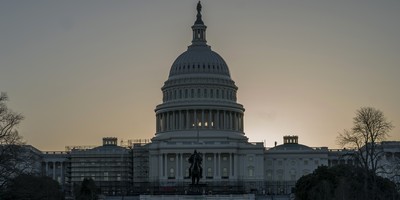The Biden administration is adamant about ridding our nation of fossil fuels. It has a goal of attaining “a 100% clean electricity grid by 2035 and net-zero carbon emissions by 2050.” Dare oppose these goals and you’re guilty of wanting to “perpetuate the climate crisis.” You’ll even be accused of harboring “antiquated views.”
Despite the frequent bullying and accompanying gaslighting for pointing out net-zero’s deficiencies, decarbonization is merely a unicorn dream devoid of reality. How can one be environmentally virtuous yet support paradoxical measures that require destroying the environment in order to save it? This is not remotely conservationist.
Of late, aggressive onshore and offshore wind pushes have been scrutinized– and for good reason. The White House wants to harness 30 gigawatts of offshore wind energy by 2030, describing it as “bold” and claiming it’ll be safer than offshore oil and gas. They also are bullish on onshore wind despite communities across the U.S. rejecting them.
The industrialization of our oceans will have ruinous environmental effects and not reduce energy bills. Wind is not reliable, as it doesn’t boast a 24/7 baseload. These structures aren’t cost-effective and boast a short shelf life. The WSJ recently reported, “GCube, a renewable-energy insurer owned by Japan’s Tokio Marine HCC, sees a downside. It found that component failures in turbines with 8-megawatt capacity or greater occur on average after just over a year. That compares with over five years for turbines of 4-to-8 megawatts.” The alternative energy source also contributes to light pollution.
The blades undoubtedly kill countless birds–including eagles. The Department of Energy even concedes, “Turbines produce noise and alter visual aesthetics. Wind farms have different impacts on the environment compared to conventional power plants, but similar concerns exist over both the noise produced by the turbine blades and the visual impacts on the landscape.”
Recommended
Not to mention, these structures pose immense threats to endangered North Atlantic right whales. Repeated denials, however, only result from the Biden administration–namely NOAA Fisheries and the Marine Mammal Commission (MMC). MMC, however, said there are Level A and B harassment concerns that emanate from ocean industrialization, in such “devices used by wind energy developers for geophysical and site characterization surveys can generate sound that may affect a marine mammal’s behavior (e.g., habitat use) and may lead to more serious consequences (e.g., stranding).”
And even the Pentagon warned proposed construction of wind turbines in the Mid-Atlantic poses significant national security risks. But mounting evidence against wind is unconvincing to Biden and company. Very troubling.
What about solar? Like wind energy, solar energy is not a viable substitute for coal, oil, and gas. Additionally, it boasts many trade offs and negative impacts on the landscape. Not only is it an intermittent energy source, it takes destroying productive agricultural lands - by means of deforestation - to prop up these structures.
Real Clear Investigation reports, “Although done in the name of fighting global warming, some amount of deforestation will be the inevitable result of clearing land for ground-mounted solar panels. Environmental groups say they hope to steer solar farms to "disturbed" or degraded land and rooftops, but those options are often expensive and impractical.”
The American Farmland Trust claims 3,900 square miles nationwide are required to accommodate these lofty solar goals–meaning 1.5% to 6% of Eastern states will lose undeveloped productive farmland to solar projects.
Other potential ecological impacts include habitat destruction, altering drainage and rainfall patterns, and killing species–endangered or not. More problematic: solar panels - especially those made in China - emit more carbon emissions than nuclear.
Let’s not forget the problematic nature of forced electric vehicle pushes from Washington. Last month, the White House announced it wants 50 percent of new cars sold to be electric by 2030 and for 66 percent of new cars sold to be electric by 2032.
EVs, however, aren’t viable without subsidies and only benefit already affluent customers. More troubling for these EV endorsers: there’s little appetite among the general public to “go electric” either.
An April 2023 AP-NORC poll found 59 percent of Americans are unlikely to purchase EVs, even with financial incentives. The Energy Information Agency (EIA) also poured cold water on EVs, stating, “We project that the total electric vehicle share―including BEVs and PHEVs―of on-road LDV stock grows from less than 1% in 2021 to 9% in 2050...”
With inflationary pressures still weighing Americans down, investment in so-called clean energy projects are taking a backseat—despite promises from the “Inflation Reduction Act.” Why? These investments are proving risky and will lead to a poor return on investment–a byproduct of the Environmental, Social, and Governance (ESG) movement.
This past week, American Electric Power announced plans to sell off “$1.5 billion sale of its 1,360-MW unregulated renewables portfolio to IRG Acquisition” by July. Yikes. That certainly casts doubt of our supposed clean energy future.
The evidence is clear: The U.S. can’t and shouldn't abandon coal, oil, and gas anytime soon–unless Americans want to forgo their first-world living standards.
Nuclear and geothermal are the only viable alternative supplements - or complements - that won’t destabilize our electric grid.
Enough of the unicorn dreams; let’s stick with reliable, cheap energy sources.























